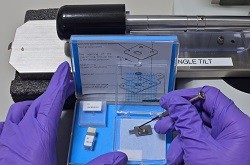Assessing the risk of nanomaterials
Despite the massive potential of nanotechnology and nanomaterials, one major roadblock to their widespread use is a lack of information on the potential human and environmental health risk of nano-enabled products. For example, once nanomaterials are released to the environment, understanding their mobility and transformations is critical to identifying possible effects on the environment and our health. To better understand these potential risks, the GUIDENANO project developed an innovative methodology for evaluating and managing the human and environmental health risks of nano-enabled products across the product’s entire life-cycle. ‘The GUIDENANO project built a web-based tool that guides users through the risk assessment process for nanomaterials and on the selection of risk management measures for mitigating the potential risks,’ explains project Coordinator Dr Socorro Vázquez-Campos. ‘To reach these goals, the project built upon the state-of-the-art on risk assessment, followed by validation of critical assumptions in the risk assessment process, generating new and revised predictive models and risk management solutions.’ The GUIDEnano tool The key outcome of the project is the GUIDEnano Tool. ‘If a potential risk is identified during the risk assessment process, then this web-based tool will help developers of nano-enabled products design and apply the most appropriate mitigation and reduction strategies for a specific product,’ says Vázquez-Campos. One of the challenges in developing the tool was finding a way to integrate the different exposure, fate and hazard assessment parts for both human and environmental health into a single framework. However, by doing so, the GUIDEnano tool goes beyond the current state-of-the-art in risk assessment for nano-enabled products. According to Vázquez-Campos, the tool integrates materials characterisation, exposure, environmental fate and hazard and risk assessment strategies. ‘The tool can be used by industrial partners under different scenarios,’ she says. ‘For instance, it can be used to assess worker exposure during such manufacturing activities as spraying nano-materials onto a surface or to assess the environmental impact of a commercial product, like polymer nanocomposites or fabrics, once it has been placed on the market.’ Easy to use To use the GUIDEnano tool, the user simply logs onto the website. For each nano-enabled product, he or she creates a case and provides such product information as: included nanomaterials, life-cycle activities, human and environmental exposure estimates and hazard data. Based on this information, the tool generates a risk assessment table and provides the user with a risk mitigation strategy. ‘From this information, the user will be able to clearly see whether the risk is acceptable, possible or (quantitatively) unacceptable in each of the product’s life-cycle stages and to plan accordingly,’ says Vázquez-Campos Dealing with the challenge of nanomaterials Protecting human and environmental health from the adverse effects of chemical substances is a priority of several EU policies, such as REACH. ‘The results of the GUIDENANO project, in terms of providing a systematic tool for new approaches to assessing the risks associated with nanomaterials, can support some of these policies in implementing their goals while dealing with the challenges of nanomaterials,’ concludes Vázquez-Campos. Project researchers are currently finalising a business plan aimed at extending the current version of the tool and bringing it one step closer to commercialisation.
Keywords
GUIDENANO, safety, REACH, nanomaterials, nanotechnology, nano-products







